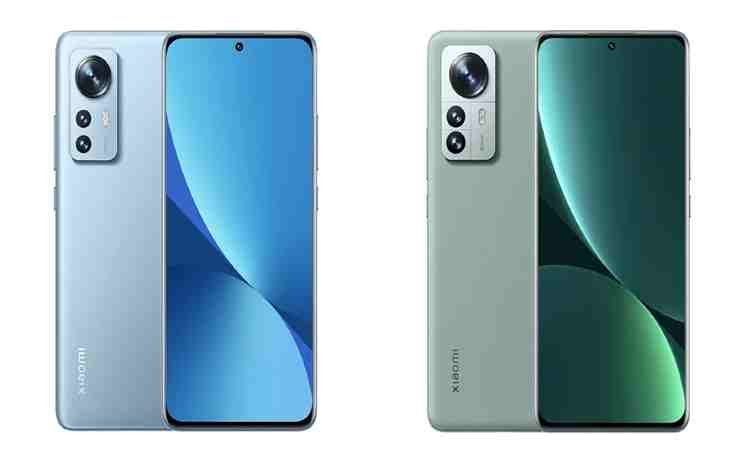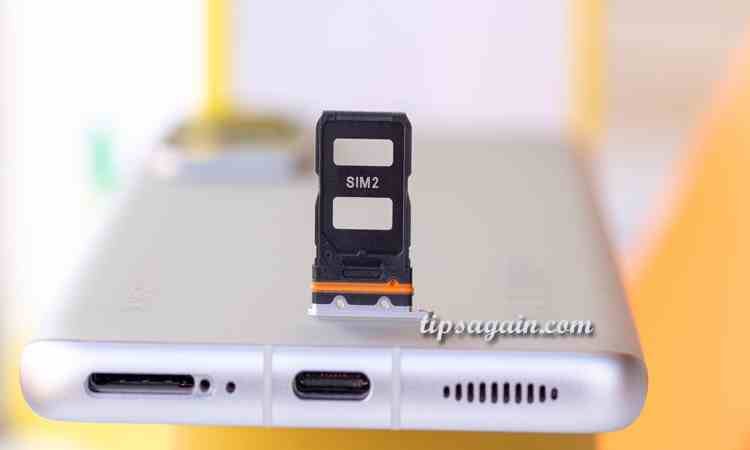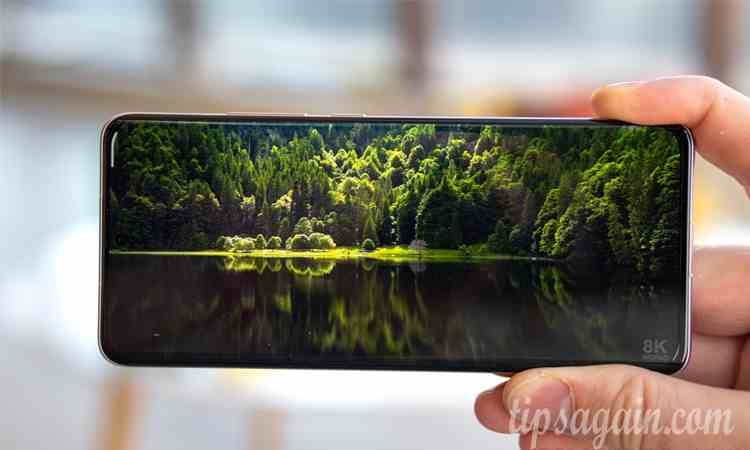mobile smartphone Xiaomi 12 review
mobile smartphone Xiaomi 12 Pure class or one to pass? · Battery life is a battle · Inconsistent notifications

The two practically indistinguishable gadgets being referred to are the Xiaomi 12 and the 12X. The last option settles down for a more seasoned, less strong Snapdragon 870 SoC and skirts remote charging through and through. Notwithstanding, it's a reasonable close lead arrangement with many very good quality elements.
Xiaomi 12 specs at a glance:
- Body: 152.7x69.9x8.2mm, 179g; Glass front (Gorilla Glass Victus), glass back (Gorilla Glass 5), metal frame.
- Display: 6.28" OLED, 12-bit (68B colors), 120Hz, Dolby Vision, HDR10+, 1100 nits (peak), 1080x2400px resolution, 20:9 aspect ratio, 419ppi.
- Chipset: Qualcomm SM8450 Snapdragon 8 Gen 1 (4 nm): Octa-core (1x3.00 GHz Cortex-X2 & 3x2.50 GHz Cortex-A710 & 4x1.80 GHz Cortex-A510); Adreno 730.
- Memory: 128GB 8GB RAM, 256GB 8GB RAM, 256GB 12GB RAM; UFS 3.1.
- OS/Software: Android 12, MIUI 13.
- Rear camera: Wide (main): 50 MP, f/1.9, 26mm, 1/1.56", 1.0µm, PDAF, OIS; Ultra wide angle: 13 MP, f/2.4, 12mm, 123˚, 1/3.06", 1.12µm; Macro: 5 MP, 50mm, AF.
- Front camera: 32 MP, f/2.5, 26mm (wide), 0.7µm.
- Video capture: Rear camera: 8K@24fps (HDR10), 4K@30fps (HDR10+), 1080p@30/120/240/960fps, 720p@1920fps, gyro-EIS; Front camera: 4K@30fps (HDR10+), 1080p@30/60fps, 720p@120fps.
- Battery: 4500mAh; Fast charging 67W, 100% in 39 min (advertised), Fast wireless charging 50W, 100% in 53 min (advertised), Reverse wireless charging 10W, Power Delivery 3.0, Quick Charge 4+.
- Misc: Fingerprint reader (under display, optical); Infrared port; Virtual proximity sensing
Be that as it may, the focus of this review is the vanilla Xiaomi 12, which adopts the majority of the 12 Professional's features aside from the telephoto cam and the ultra fast charging. Obviously, the Professional has a greater display too. So for anyone looking for a premium and compact Android solution in 2022, the Xiaomi 12 might be it.
It's going to be hard to tackle a portion of the enormous names in the industry that offer compact handsets, for example, the Samsung Galaxy S22 and the iPhone 13 mini as both of these fall within the same cost range
There are two or three significant reasons we accept the 6.28-inch Xiaomi 12 has a slight edge over its competitors. As far as one might be concerned, the phone isn't compromising as far as display quality, and then, it also has a significantly greater battery with blazing-fast wired and remote charging support.
Unboxing the Xiaomi 12
The Xiaomi 12 arrives in a standard box containing all the usual client manuals, a USB-A to USB-C cable and the right 67W charger
There's also a bonus case in the container, which is usually a rare sighting in flagship packages.
From the beginning, we were really dazzled by the phone's ergonomics and fabricate. It could be only the size that's fooling us, yet we would argue that there's something else. There's something about how thick and tough the Xiaomi 12 feels in hand. The adjusted edges of the front and back panel meet the center frame without forming any protrusions or edges. The entire surface of the handset feels uniform and smooth.
Xiaomi says the front panel is safeguarded by Gorilla Glass Victus while the back utilizes a Gorilla Glass 5. The latter's iced finish makes it seem a bit like plastic, or that's the manner by which the Pink option feels. Fortunately the finish is somewhat grippier than your standard soft-touch glass paint work or reflexive back panel.
The camera module on the back is huge, with rather sharp edges, and the entire module protrudes significantly. The main sensor protrudes even further, causing the phone to wobble on a flat surface. With all that hardware, the handset is a bit top-heavy, too.
The side frame is adjusted on all sides, and it accommodates the power button and the volume rocker on the right side. Both are within the thumb's reach.
Speaking of that, the under-display fingerprint reader is placed a bit awkwardly as it's positioned too near the bottom edge, requiring some finger gymnastics

Anyway, the bottom edge houses the dual SIM card tray along with the USB-C connector and the speaker grille. Not at all like the majority of its competitors, Xioami involves an undeniable secondary speaker for its audio arrangement placed on the top frame along with the IR blaster and Harman Kardon inscription.
In case you are accustomed to holding the phone horizontally with the USB connector facing right, you might have to do it the other way around because the top speaker naturally falls right in the palm and easily gets muted.
On the front, we have a discreetly bended front glass with thin bezels all-around. The side and bottom ones look somewhat symmetrical. The side curvatures make the bezels look slimmer. The top bezel is visibly thinner, however, probably because it doesn't have to accommodate a loudspeaker.
This is the place where we ought to also mention the handset is using virtual proximity sensing instead of a hardware sensor and may misbehave at times, for the most part during calls.
Even however there's nothing too special about the Xiaomi 12's chassis, the presented design hits all the right notes. Xiaomi could shave off as much as it could around the display while the bended panels and the iced back give a safe hold. All in all, Xiaomi didn't leave a lot to complain about aside from the unfortunate fingerprint scanner placement. A tad higher would have been greatly appreciated.
Compact and bright 120Hz OLED
Even though the Xiaomi 12 isn't the company's top flagship model from the series, it doesn't cut corners when it comes to display quality.
The compact 6.28-inch OLED panel offers a standard 1080 x 2400px resolution, 120Hz adjustable refresh rate, 480Hz touch sampling rate, 360-degree ambient light sensor and 12-bit color depth. That makes the Xiaomi 12 and 12X the first smartphones to market with 12-bit panels and with the right content they should be able of displaying up to 68 billion colors. HDR10+ is supported, but most importantly, Netflix is happy to stream Dolby Vision-enabled content to the phone. Even though Dolby Vision is supported on 10-bit displays as well, one of its benefits is the 12-bit color support, something which HDR10 and HDR10+ lack

Obviously, we ran our usual tests on this screen too, and we are happy to report high brightness values. With the slider set to a maximum in manual mode, the panel peaks at 494 nits. Setting the brightness mode to automatic can support that to a whopping 896 nits, which is a great outcome suitable for a flagship phone. Content consumption under bright daylight ought not be an issue. We didn't reach the advertised 1100 nits with our 75% APL, however, at lower APL, the panel might as well go above that mark.
| Display test | 100% brightness | ||
| Black, |
White, |
||
| 0 | 506 | ∞ | |
| 0 | 1050 | ∞ | |
| 0 | 504 | ∞ | |
| 0 | 925 | ∞ | |
| 0 | 494 | ∞ | |
| 0 | 896 | ∞ | |
| 0 | 468 | ∞ | |
| 0 | 782 | ∞ | |
| 0 | 1214 | ∞ | |
| 0 | 498 | ∞ | |
| 0 | 926 | ∞ | |
| 0 | 416 | ∞ | |
| 0 | 856 | ∞ | |
| 0 | 831 | ∞ | |
| 0 | 482 | ∞ | |
| 0 | 778 | ∞ | |
| 0 | 327 | ∞ | |
| 0 | 590 | ∞ | |
Additionally, we tracked down the 360-degree ambient light sensor to be quite responsive in all scenarios. Have you seen that the auto-brightness won't move on certain phones assuming there is a bright light source behind the gadget? Indeed, there's no such issue with the Xiaomi 12. The gadget can adjust its brightness regardless of where the light source is.
Shading accuracy with the default Clear mode isn't exemplary since the whites and grays all have that typical blue-ish tinge. The other shadings are also a bit saturated, yet look quite decent.
Going for the purported Original preset will give you wonderful shading accuracy. The average dE2000 is only 1.1, while the maximum dE2000 is 2.3. Both are exceptional outcomes, and the Original mode also nails the whites and grays. And in case you want to adjust the shading temperature to your liking, Xiaomi gives a shading wheel the Advanced shading mode.
HRR control
The HRR control is straightforward and viable in many cases. The software offers only two invigorate rate settings - Automatic and Custom. The latter allows you to compel either 60 or 120Hz, while the auto mode prioritizes the maximum 120Hz invigorate rate at whatever point required. It is by all accounts working in almost all of the apps we've attempted - that includes framework and outsider ones. The framework will only dial down to 60Hz on the off chance that you are not interacting with the display or while watching recordings on Netflix, YouTube and in the default Gallery app.
Since the phone doesn't utilize a LTPO display like the Xiaomi 12 Master, we observed only two invigorate rate ventures here - 60Hz and 120Hz. Sadly, we were unable to go past 60Hz in almost all of the games we attempted, with only Sky Power: Reloaded and Dead Trigger being the exceptions we could check.
Battery life
The Xiaomi 12 offers pretty much average battery capacity compared to competing flagship solutions, although the small 6.28-inch diagonal really puts the large 4,500 mAh into context, and it's borderline amazing assuming you ask us. Unfortunately, however, the overall battery endurance is far from great. Flagship SoCs are famous for their relatively high power consumption, so we weren't expecting great runtimes to begin with.
However, the 3G talk and standby times are pretty underwhelming, while the web browsing score is comparably disappointing. The handset's video playback is potentially the only satisfactory component of the 82 hours overall score.
We've included other Snapdragon 8 Gen 1-powered smartphones for the sake of comparison, and as it turns out, most all phones running that SoC post better scores with similar battery capacities. Even the Samsung Galaxy S22+ with its 4,500 mAh battery and considerably bigger screen beats the Xiaomi 12 in all tests. Also, only the Realme GT2 Pro and the iQOO 9 Pro use the energy-efficient LTPO2 OLED panels, so this leads us to believe that the software is the culprit.
One would trust that Xiaomi will fix its flawed runtimes with a software update however until further notice, the Xiaomi 12's battery endurance is underwhelming.
Charging speed
As far as charging is concerned, the Xiaomi 12 is competitive. The gave 67W charger can restore 87% of the battery in the initial 30 minutes, whereas a full charge from flat takes about 46 minutes. This is very near the advertised 39 minutes, yet we saw that the battery reaches the "completely charged" state a couple of moments after the 39-minute mark.
The most impressive bits are the temperatures and the battery design. The phone's surface during charging remained fairly cool and this, in turn, could be due to the battery design. The Xiaomi 12 Pro uses a single-cell battery design that allows for higher density than dual-cell batteries, which tend to charge faster. Xiaomi was still able to implement 120W charging on its 12 Pro and even though the company doesn't explicitly say the same battery technology applies to the vanilla Xiaomi 12, we have a good reason to believe it's been used here as well, at 67W, though.
In addition to the 67W wired charging, the gadget supports 50W wireless charging when furnished with the appropriate Xiaomi charger. And, of course, the handset supports reverse wireless charging at 10W in case your TWS buds or your watch run out of juice, and this is the only way to charge them on the go.
Speakers
The Xiaomi 12 uses undeniable stereo speakers, or that's at least what the grilles suggest at first glance. Upon testing the balance between the two speakers, we observed that the top one barely contributes to the overall stereo experience. The bottom speaker is considerably stronger. Makes us wonder assuming Xiaomi utilized a greater earpiece after all and gave an additional grille to it at the top.
Another annoying design flaw is the positioning of the two speakers. Assuming you are used to holding the bottom of the phone facing right, you will generally hinder the grilles in landscape mode. Flipping the phone around helps. Gracious, and in case you think the Dolby Atmos optimization and the Harman Kardon-tuned speakers are something other than marketing trick, think again.
The handset comes with Dolby Atmos-enabled naturally, yet it made the vocals distorted at higher volumes, the bass was flat, and the highs were ringing. The mids were disproportionally boosted, too. Turning it off made the sound significantly more full, balanced and restored the lacking bass. It's something else entirely. So despite our frustration with the speakers' placement and the imbalanced loudness, we loved the overall sound quality with Dolby Atmos disabled. Loudness was also very great and the - 25.3 LUFS is enough for a "Generally excellent" score. And for the record, we ran our audio test with Dolby Atmos turned on since that's the default state of the feature.




















































































